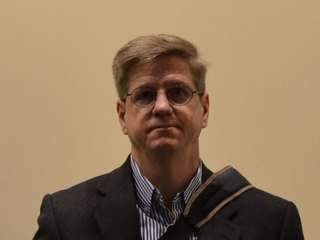Gerard Fitzgerald
(Residential Fellow, 2018-19)

Gerard Fitzgerald
Residential Fellow
The Nature of War: An Environmental History of Industrialization in the United States During World War I
Gerard J. Fitzgerald is a Visiting Scholar in the Department of History and Art History at George Mason University, where his research focuses on aspects of military environmental history involving militarized landscapes, industrialization, public health, chemical weapons, biological weapons, and food. He received a BA in history from the University of Georgia and an MS and PhD in history from Carnegie Mellon University where, as an NSF Cold War Science and Technology graduate fellow, his training focused primarily on the history of technology, biology, and public health. He has published in the American Journal of Public Health and The Journal of American History and is currently completing Turn on the Light: Airborne Disease Control in the United States, 1930-1960, a history of the impact of the contributions of civilian public health research during the interwar period to the origins of the United States biological weapons during World War II.
His research at the Linda Hall Library focuses on a new book project concerning the environmental history of how the United States industrialized and mobilized to meet the challenges of World War I, a project beginning during the Spanish-American War in 1898 and concluding during the 1920s. A chapter of that work, “The Chemist’s War: Edgewood Arsenal, World War I, and the Birth of a Militarized Landscape,” will be published as part of Environmental Histories of the First World War by Cambridge University Press in August 2018
While in residence he plans to focus on the Linda Hall Library collections on engineering, science, and technology to examine the role of climate and the environment on the military mobilization of national transportation networks such as the nation’s railroads, the Panama Canal, East Coast maritime ports such as New York Harbor, various military construction projects in the Midwest and South necessary for manufacture and wartime logistics, and the postwar construction of the Liberty Memorial in Kansas City, which was completed in 1926.
